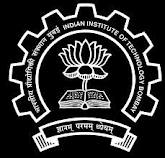Climate and Weather
Adaptation to climate change with a focus on rural areas and India - A document by GTZ (India)
Posted on 15 Feb, 2012 01:59 PMIt aims to strengthen the capacities of rural communities in India to live with climate variability and change. The work includes supporting governments of four partner states of Rajasthan, Tamil Nadu, Madhya Pradesh and West Bengal, local communities and other relevant stakeholders in identifying, developing and carrying out adaptation measures in pilot regions.
Living rivers, dying rivers: Rivers in the Western Ghats
Posted on 10 Feb, 2012 04:12 PMRiver stories from Maharashtra: Many morals to learn
Parineeta Dandekar’s presentation began with an account of some statistics related to Maharashtra, the third largest state in India. Regarding the state of water resources in Maharashtra, she noted that of the five river basin systems, 55 percent of the dependable yield is available in the four river basins (Krishna, Godavari, Tapi and Narmada) east of the Western Ghats. These four river basins comprise 92 percent of the cultivable land and more than 60 percent of the population in rural areas. 45 percent of the state's water resources are from west flowing rivers which are mainly monsoon specific rivers emanating from the Western Ghats and draining into the Arabian Sea.
With 1821 large dams and more in the offing, Maharashtra has the maximum dams in the country (35.7%). However, the proportion of gross irrigated area vis a vis the gross cropped area at 17.8 percent is much lower than the national average of 44.6 percent. The contradictions from the state, which is home to the highest number of dams, were discussed. In nearly 70 percent of the state’s villages (around 27,600 villages), water is either not available within 500 metres distance, or within 15 metres below ground level or when available is not potable (World Bank, Promoting Agricultural Growth in Maharashtra, Volume 1, 2003).
Dandekar discussed the World Bank funded Maharashtra Water Sector Improvement Project (MWSIP) initiated in 2005 whose main components were establishment, operationalisation and capacity building of Maharashtra Water Resources Regulatory Authority (MWRRA); establishment of river basin agencies in Maharashtra; and restructuring and capacity building of the Water Resources Department. The MWRRA Act (2005) has been amended, taking out the clause for equitable water distribution, and granting the Cabinet the rights to have the last say about water entitlements. This has led to a diversion of water for irrigation from the vulnerable, suicide-prone Vidarbha region to thermal power plants. According to Prayas, “entitlements of more than 1500 MCM have been changed from agriculture to industries and cities”.

SICRISA invites applications for fellowships & writing workshops for climate change researchers - Apply by February 21, 2012
Posted on 03 Feb, 2012 09:29 AM‘Support to Improve Climate Research and Information Services in South Asia’ (SICRISA) is a two-year project which aims to increase the quality and quantity of climate change research from South Asia. This will be achieved by training and mentoring South Asian scientists through fellowships and writing workshops, and by publishing two special editions of journals.
River basin planning for Ganga : Lessons from Murray-Darling Basin Authority
Posted on 02 Feb, 2012 09:15 PMThis interactive session with NGOs working on water and river issues was held in continuation of the “Living rivers, dying rivers” series at the request of AusAid. The meeting was chaired by Prof. Ramaswamy R. Iyer, Honorary Professor, Centre for Policy Research and an author of books and articles on water while the lead speaker Dr.
CSE invites applications for Team Head for Climate / Renewable Energy Programme, Delhi - Apply by February 1, 2012
Posted on 02 Feb, 2012 09:42 AMContent courtesy: DevNetJobsIndia

The Centre for Science and Environment (CSE), an established research and advocacy institute needs Senior Researchers for its programme on clean air and transportation, to do high quality policy and technical research, interact with policy makers, scientists & other target groups and develop networks and campaign.
Draft National Policy 2012 seems to help only vested interests, not the farmers or the environment says SANDRP
Posted on 01 Feb, 2012 09:18 PMSource: SANDRP
Draft of the National Water Policy 2012 released by the Ministry of Water Resources (MoWR) on 31st January 2012 invites comments from the general public till 29th Feb 2012
Posted on 01 Feb, 2012 02:01 PMA section of the water sector practitioners and experts, have been engaged in the process, and a summary of the discussions so far, is available here.
Saving some last remaining free flowing rivers
Posted on 24 Jan, 2012 06:38 AMGuest post by: Parineeta Dandekar
Looking beyond Durban:Where to from here - An article in EPW
Posted on 20 Jan, 2012 03:58 PMThe Durban climate negotiations have set into motion new negotiations, with the possibility of re-opening old and contentious issues, while at the same time leaving the global climate regulatory framework unchanged. While disappointing, this does create a possibility of starting anew.
Geomatrix '12, IITB, February 26-29, 2012, Mumbai
Posted on 19 Jan, 2012 10:05 AMOrganizer: Indian Institute of Technology Bombay (IITB).
Venue: Indian Institute of Technology Bombay (IITB), Powai, Mumbai - 400076

Description:
Geomatrix’12 is the third in a series of conferences on geoinformatics tools, techniques and applications being organized by the Centre of Studies in Resources Engineering (CSRE), IITB since 2009. The first two conferences were national level conferences; Geomatrix’12 is envisaged to be an international event with strong participation from national and international researchers and institutes of repute at both organization and delegate level.





